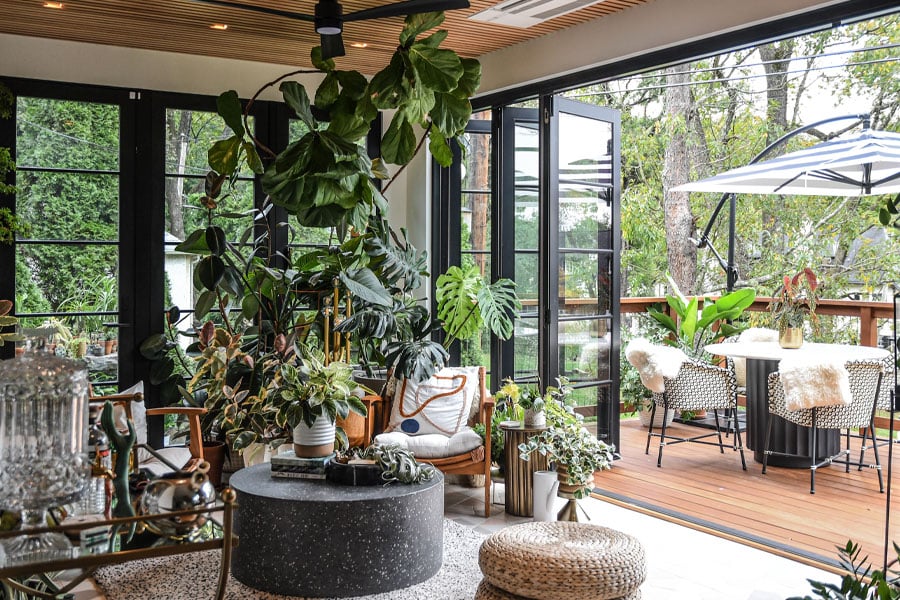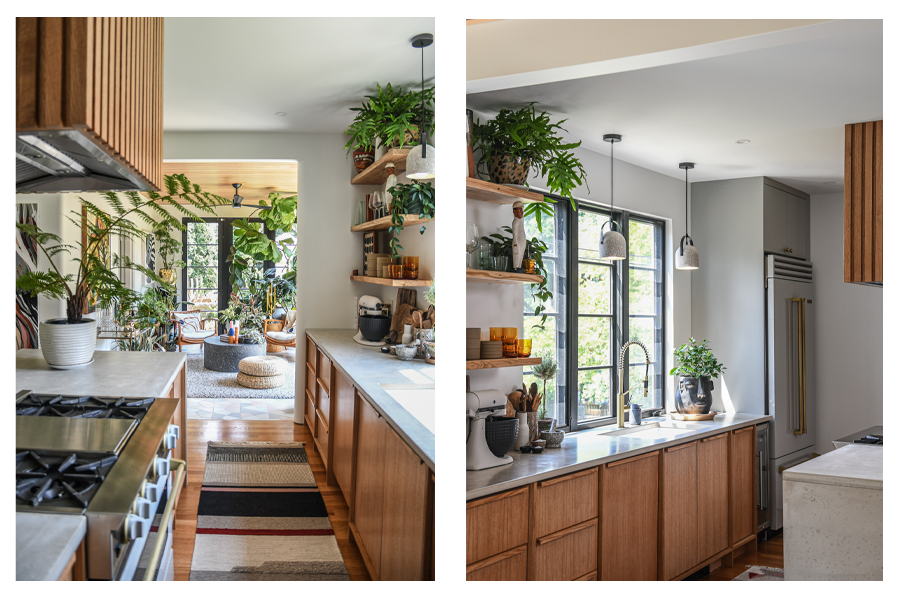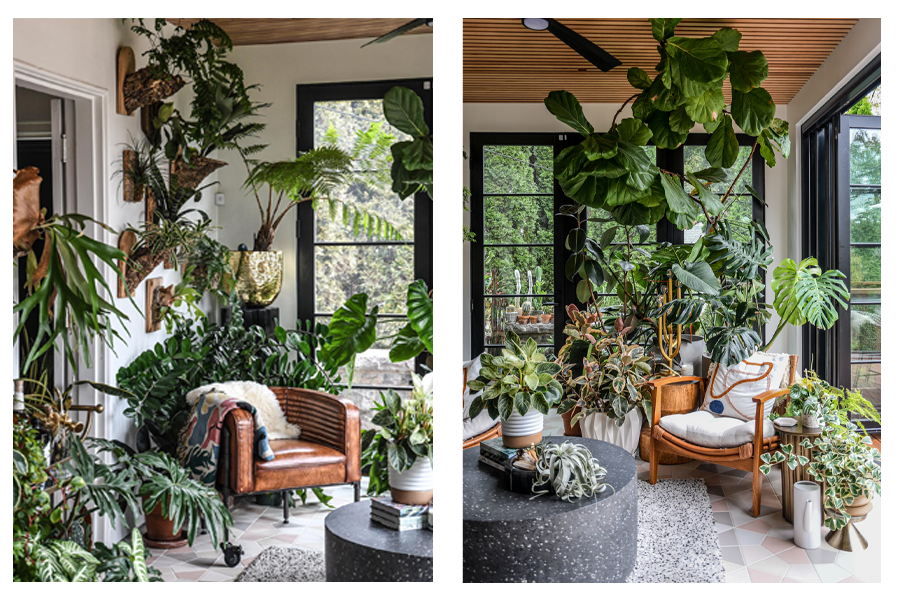Tips
Bringing the outdoors in with houseplant tips from Hilton Carter
It’s one thing to bring a beautiful “plantscape” to life, it’s another to keep it alive! That’s why we sought out some advice from plant stylist and author, Hilton Carter.

With a collection that includes hundreds of potted plants, Hilton Carter knows the value of natural light. When the plant stylist and author moved from L.A. back to his hometown of Baltimore, he renovated his new home in a way that keeps both his plants and his people – his wife and their new baby – happy and healthy!
Now he’s sharing four tips for keeping a plantscape thriving in a four-season climate.
1. Assess your light
“It’s going to determine if your plants thrive or not,” said Carter. The area that has the most windows (ergo, the most natural light) can host the most plants. But! Be careful to consider what type of light is streaming through.
- South-facing windows usher in direct sunlight, which is great for desert-loving plants like cacti.
- North-facing windows are better for greenery that thrives in low or medium light, like a peace lily or snake plant.
In general, Carter recommends placing your plants near a bright window, but not directly in the sun.

Sun-loving plants thrive in the light-flooded sunroom (left), while open shelving next to the kitchen window offers a more sheltered oasis for the plants that prefer indirect light (right).
2. Pick a statement plant or style
Select a plant to take center stage. “You could prioritize size and start by selecting a larger plant or tree and then nestle all your other plants around it,” Carter said.
His other favorite method is to make the decision based on aesthetic. “Say you live in the Midwest, but you want your home to have Arizona desert vibes,” the stylist mused. “I would seek out large, south- or west-facing windows. They’re perfect for cacti and succulents.”
Carter combined these two approaches to start his own collection — first, selecting a large tree (a fiddle leaf fig he named Frank) that brought home the tropical flora he fell in love with while vacationing in Costa Rica.

Frank the fiddle leaf fig and the rest of Carter’s tropical plants have access to fresh air and direct sunlight when the Folding Outswing doors in the sunroom are open.
3. Add depth, color & texture
To bring a lush “junglified” style to life, Carter recommends taking some cues from nature.
- Vary height by using plants of different sizes or employing plant stands and benches. “Tree trunks don’t need as much light as the branches and foliage,” he said. So in between the floor and bottom of that first leaf is a perfect place to pepper in medium-size plants to fill the open area.
- “Thrill, fill, spill” is a mantra Carter likes to use when creating a plantscape. It works like this: Thrill with a statement plant, like a tall leafy tree. Fill in the surrounding area with textured and colorful plants, like ponytail palms, ZZ plants, or prayer plants. Spill with lush cascading plants, like marble queen pothos or donkey tail plants.

Viewed from any angle, Carter’s lush sunroom brings to life his “thrill, fill, spill” mantra.
4. Tips for watering your house plants
At the end of the day, plants are a lot like us. They thrive in natural sunlight and with proper hydration.
- “Remember to water your plants based on the moisture level of the soil,” Carter said. A moisture meter is a helpful tool, but if you (literally) want to get your hands dirty, you can check moisture levels by sticking your finger a couple inches into the soil. If it’s dry, it’s time for a drink. If it’s damp, give it a few days.
- And, while it may seem counterintuitive, your house plants actually need less water in the winter. There’s naturally a slower grow rate during chilly seasons, so your plants don’t require as much.
“Tuning into my plants and watering them is incredibly meditative,” shares Carter. “It’s as much self-care for the plants as it is for me.”
Takeaways from Carter’s renovation
Inspired by Carter’s home? Consider these lessons as you plan your own home renovation.
- Plan for the best light: If you're in the Northern Hemisphere, put as many windows and doors on the south side of your home as you can. Southern light will be the brightest and warmest. Carter prioritized the sunny south side by rearranging his first-floor layout so the most-used rooms, like his kitchen, faced south. He made the most of this strong, southern light by using floor-to-ceiling E-Series windows.
- Build your happy place: So much is possible! A moving glass wall can be a great replacement for a set of three windows and help create a more seamless transition to the outdoors. It might seem like a major change, but a Folding Outswing door is well-suited to a remodel since it doesn't require an extra thick wall. This is how Carter created his "terrarium" — a place where his tropical plants can thrive, and he can pursue his passion for propagation.
- Connect with nature: Moving glass walls and floor-to-ceiling windows can help blur the line between indoors and outdoors. "We try to tie everything back to nature," Carter said of his home. And this connection is particularly palpable on nice days when the Folding Outswing door is open and his plants, family and even family dog can soak up the light and fresh air.
